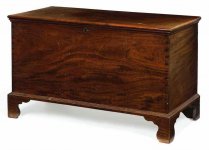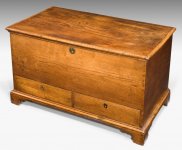terry candee
Member
I'm planning on building a hope chest for my granddaughter prior to her June wedding. While I've built a fair number of such chests I've never been comfortable with dovetail spacing or perhaps I should say pin spacing. Like many I prefer small pins and I think all pins should be the same size. So should the pins be spaced equal distance apart, have smaller spaces between pins at the top and gradually be further apart the closer to the bottom, be the same on all four sides or be randomly spaced to avoid any particular pattern? Would you suggest using the Fibonacci gauge as a guide? I'm asking for what seems to be most esthetically pleasing.
Your input is appreciated.
Terry Candee
Your input is appreciated.
Terry Candee


